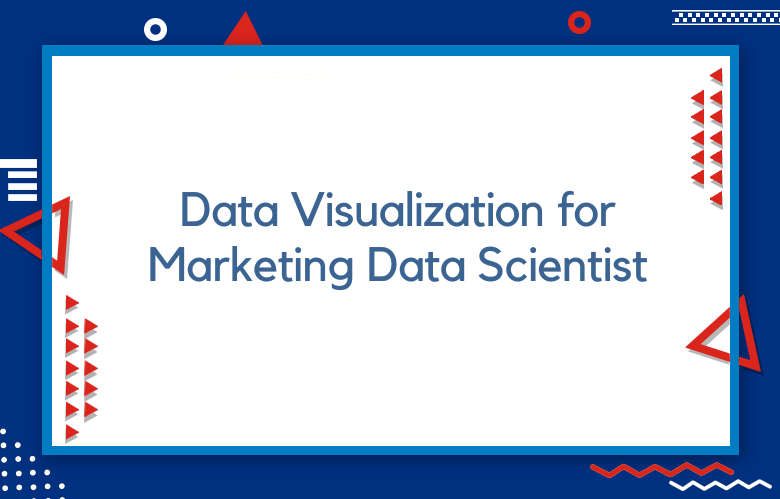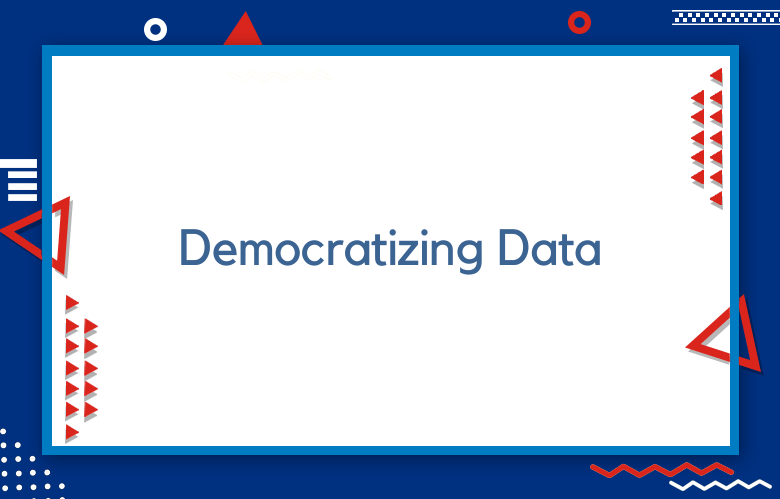5 Advanced Data Visualizations All Marketing Data Scientists Should Know

As a marketing data scientist, staying on top of the latest data visualization tools and techniques is essential. We’ll look at five advanced data visualizations you should know about it. These visualizations can help you identify powerful insights and trends in your data. So let’s get started!
As a marketing data scientist, you know that visualization is critical to understanding your data. But as your datasets become more complex, you must use more advanced techniques to create meaningful visualizations.
We’ll introduce five techniques and show how they can help you gain insights into your marketing data. So read on and add these powerful tools to your data visualization arsenal!
As a marketing data scientist, you know that visualization is critical to understanding your data.
But as your datasets get more complex, you need advanced visualization techniques to get the most insights.
We’ll show you the five most effective advanced data visualizations for marketing data scientists.
We’ll provide examples of each visualization to see how they can be used in practice.
Finally, by this post’s end, you can apply these techniques to your data and get hidden insights!
5 Advanced Data Visualizations All Marketing Data Scientists Should Know
1. Cohort Chart for Marketing Data Visualization
The cohort chart is a powerful marketing tool that can help you visualize your data. By analyzing your data this way, you can better understand customer behavior and find areas for improvement.
There are many ways to visualize data; a cohort chart is just one option. A cohort chart can be a helpful tool if you want to compare different marketing strategies or track customer behavior over time.
Cohort charts can offer valuable insights into how marketing campaigns progress and how customers interact with your brand. If you’re interested in using a cohort chart for marketing data visualization, many different software options are available to help you create one.
With the correct data, a cohort chart can be a powerful tool for comparing marketing strategies and tracking customer behavior over time.
Creating a cohort chart for marketing data visualization can be a constructive way to track customer behavior. By observing patterns in customer behavior, you can make more informed marketing decisions that will better tailor to your target audience.
I highly recommend trying cohort charts if you’re looking for a more effective way to visualize your marketing data.
There is a lot of data on marketing data visualization out there. A cohort chart can help you understand everything and find trends you might otherwise miss.
Cohort charts are a powerful tool for marketing data visualization. By mapping out data points over time, they can reveal hidden trends and relationships that would be otherwise difficult to spot.
Charting marketing data can be a great way to visualize trends and patterns. A cohort chart can be handy for this purpose.
A cohort chart shows how different groups of people have behaved over time. It can be helpful for marketers in understanding customer behavior and making decisions about future marketing strategies.
The Marketing Data Visualization cohort chart is a great way to see your marketing team’s performance.
This chart can help you identify areas of improvement and potential opportunities.
Tracking your marketing data over time can help you make better-informed decisions about your marketing strategy.
The Marketing Data Visualization Cohort Chart is a powerful tool for analyzing data patterns and trends over time. It allows you to easily spot opportunities and make decisions that will help your business succeed.
Cohort charts are a great way to visualize marketing data. By tracking customer behavior over time, you can identify trends and patterns to help you make better decisions about your marketing campaigns.
2. Correlation Matrix for Marketing Data Visualization
A correlation matrix is a tool marketing professionals use to visualize data relationships. By seeing these relationships, professionals can better understand how different marketing activities impact one another. Ultimately, this understanding can help them make more informed decisions about their marketing strategies.
A correlation matrix is a powerful tool for marketing data visualization. It allows you to see relationships between different data sets and can help you to find new insights into your data.
Correlation matrices are a great way to visualize marketing data. Sizing the relationships between different data points, you can start to see patterns and trends that you couldn’t see by looking at the raw data alone.
It is beneficial when trying to identify which marketing strategies are most effective. By looking at the correlation matrix, you can see which methods yield the most outstanding results.
Creating a correlation matrix is easy with most statistical software packages. It is a tremendous place to start visualizing your marketing data.
Creating a correlation matrix for marketing data visualization can help uncover relationships between different pieces of data, which can, in turn, help marketers make more informed decisions about their campaigns.
Data visualization is critical to effectively marketing your product or service. By creating a correlation matrix, you can see relationships between different marketing variables, and plexiglass Correx can help you make more informed decisions about your marketing strategy.
Developers can use various tools and approaches to create a correlation matrix for marketing data visualization. One standard tool is heatmaps, allowing developers to see trends and correlations in the data and make changes accordingly.
Another method is to use decision trees. This approach helps developers understand how different decisions will impact the visualization results.
A correlation matrix is a valuable tool for quickly visualizing marketing data. We present data in a graphical way that allows managers to quickly identify which factors are most closely linked. This information can be used to make informed decisions about marketing strategy.
A correlation matrix is a handy tool for marketing data visualization. Mapping out the relationships between different data pieces helps you see patterns and trends you might otherwise miss. Plotting your information this way can be a helpful first step in understanding what it all means.
3. Distplots for Marketing Data Visualization
Distplots can be an excellent tool for marketing data visualization. By allowing you to see the distribution of your data, they can help you identify trends and patterns that you may not have distinguished before. With creativity, you can turn a simple distplot into an engaging and informative visualization.
To fully understand marketing data, it is essential to create a visualization. One way to do this is by using a distplot. A distplot shows data distribution and can be helpful in marketing data visualization.
There are many different ways to visualize marketing data, but one of the most popular is the distplot. Distplots allow you to see the distribution of data points, which can help you understand where most of your customers are coming from or how they respond to your marketing campaigns.
There are many ways to visualize marketing data, but one of the most popular methods is using a distplot. Distplots are a great way to see the distribution of data and can help identify patterns and trends.
Marketers can use distplots to see how their customers will distribute across different ages, genders, locations, or income levels. By understanding the distribution of their customer base, marketers can make better decisions about where to focus their marketing efforts.
There are several ways to visualize marketing data, but one of the most popular methods is using distplots.
Distplots provide a quick and easy way to see the distribution of numerical data and can be customized to show different aspects of the data.
Marketing professionals can use distplots to compare customer groups, evaluate marketing campaigns, and track market trends over time.
There are many ways to visualize marketing data, but one of the most effective is a distplot.
A distplot allows you to see the distribution of data points, which can be incredibly helpful in understanding your audience.
With a distplot, you can more easily identify outliers and trends and make better decisions about your marketing strategy.
To better understand our marketing data, let’s create some distribution plots. This will allow us to examine the data and see if any patterns emerge.
First, we’ll start with a distplot of our sales data. This plot will show us how our sales figures will be distributed. We can see from this plot that most of our sales will concentrate in the $200-$400 range.
The rest of the plot shows a relatively even distribution of data points. This is good news, as our sales will concentrate less heavily on any area.
Next, let’s look at a distplot of our customer satisfaction data. It will give
4. Waterfall charts for Marketing Data Visualization
For marketing data visualization, waterfall charts provide an effective way to display both positive and negative results. By clearly identifying areas of improvement and success, these charts help organizations set priorities and track progress over time.
- Waterfalls are a type of chart used for marketing data visualization.
- They are called waterfall charts because they resemble a waterfall. The tallest column represents the total value, and the smaller columns below represent the individual values that comprise the total.
- Waterfall charts can show how different marketing strategies contribute to overall sales or how deals change over time in response to various marketing efforts.
- Using a waterfall chart, businesses can better understand the most effective marketing tactics and where there might be room for growth.
Marketing Data Visualization can be complex, and Waterfall charts are a great way to simplify things and make the data more digestible. By dividing the data into smaller chunks, you can better understand what is happening and how it affects your business.
Waterfall charts can be a great way to visualize marketing data.
They can help show how different marketing channels contribute to overall performance and how each campaign contributes to the business’s success.
Seeing results in a waterfall chart can motivate marketers, showing them where their efforts are paying off.
Creating waterfall charts for marketing data visualization can be a great way to engage your audience and communicate complex data in an easily understandable format.
By utilizing multiple colors and adding labels to each data point, you can create a visually arresting chart that will grab your audience’s attention and help them quickly understand your data.
Waterfalls are one of the most popular visuals for marketing data visualization. But why?
The simple answer is that waterfall charts communicate complex data clearly and concisely.
But there’s more to it than that. Waterfall charts also have a certain aesthetic appeal, making them fun and engaging.
So, don’t be afraid to use a waterfall chart next time you communicate complex marketing data. It just might be the perfect solution.
5. Funnel charts for Marketing Data Visualization
Marketing data visualization doesn’t have to be boring. Funnel charts are a great way to add interest and engage your audience.
Charting data can be dull, but it doesn’t have to be. Try using a funnel chart to visualize your marketing data. It’s a great way to see where your efforts are paying off and where you might need to focus more attention.
Marketing data visualization doesn’t have to be boring. With funnel charts, you can take a visual approach to understanding your data.
Funnel charts are a type of graph that can help you track progress from multiple perspectives. By utilizing marketing funnel charts in your data visualization, you can see where your marketing efforts are beneficial and might need improvement.
Marketing data visualization can be done in many ways, one of which is through a funnel chart. Funnel charts are graphs often used to show the stages of a process, journey, or goal.
Are you looking for a way to visualize marketing data effectively? If so, you may want to consider using a funnel chart. Funnel charts can be a handy tool for understanding and summarizing complex data sets.
Using a funnel chart, you can quickly see relationships and patterns that may not be immediately apparent if you want to know more about funnel charts for marketing data visualization.
Marketing data visualization doesn’t have to be boring. Funnel charts can help you see the big picture and uncover new insights.
With funnel charts, you can track progress, identify areas for improvement, and measure success.
Funnel charts are a powerful tool for marketing data visualization. Using them allows you to make better decisions, improve your marketing campaigns, and track your progress.
Funnel charts are a popular choice for marketing data visualization. They can show the progress of a campaign or the sales pipeline, for example, and they are also helpful ways to identify bottlenecks in your process.
For Marketing Data Visualization, funnel charts are a great way to represent data visually. By showing a progressive narrowing of Wales, ing content from a large pool to a smaller group of defined targets, it’s easy to track progress and identify potential issues.
Conclusion
Henceforth, various data visualizations can help understand and analyze marketing data if you’re looking for help understanding your marketing data or creating compelling visuals.
Contact us today for Marketing Data Visualization Consulting, and let us show you how we can turn your data into insights that drive actionable results.
Call: +91 9848321284
Email: [email protected]



